Most critical of all is the touch for business that makes a product profitable and sustainable for the consumer and the producer.
Through thick and thin, the Brandt Co. headquartered in Brawley, California, has built on those fundamentals in the California beef market.
Today, the Imperial County operation has not only survived in a state known for ag regulations – but has managed to flourish as well.
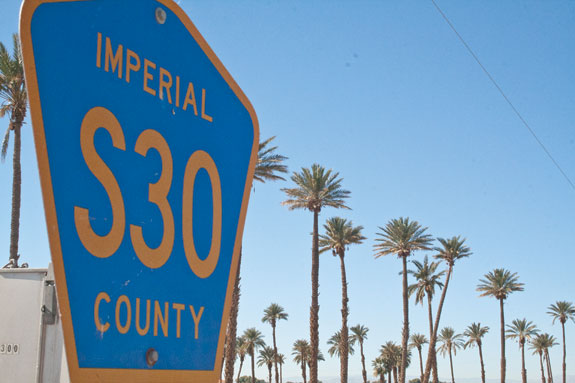
Brandt Co. sits in California’s fertile Imperial Valley, an expansive farming region just above the Mexican border, located about two hours east of San Diego.
The 95,000-head feedlot is the center of the operation. The company also features 5,000 acres of forage production land, a high-tech compost yard and a jointly owned rail line for corn shipments.
A short drive away is a packing facility the Brandt family built cooperatively with other local feeders in 2001.
The facility was sold to National Beef in 2006. Today, Brandt also uses a processing facility in Los Angeles for custom slaughter of its natural beef products.
Golden State legacy
Cattle production has deep roots in the Imperial Valley, with ranchers moving herds into the region as far back as the 1880s.
The concentrated feeding operation movement started in California in the ’40s, about the time Bill Brandt’s father and uncles arrived and set up shop.
In the ’70s the operation grew rapidly behind Bill’s direction, jumping from 1,200 head to 90,000. “We started with a farming operation, grew the farming deal and then grew the feedyard along with it,” says Bill, the owner and president for Brandt Beef and the cattle operation.
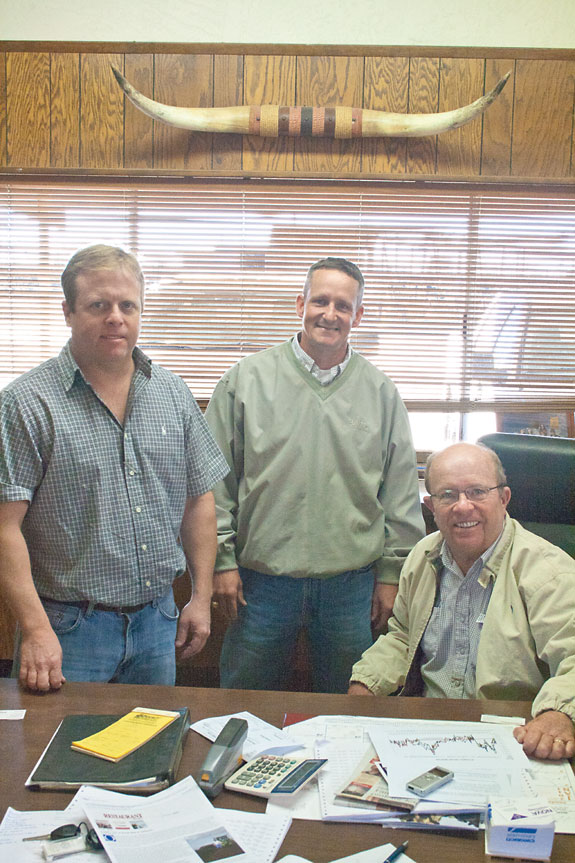
Duties at the company are spread among Bill’s three sons. Mark leads the farm operation, while Ryan is involved in advertising and Eric leads Brandt Beef – a separate entity from the feedyard that markets natural beef from Los Angeles.
Scott Chapman, a classmate of Eric’s from Texas A&M, manages the feedyard and compost facility located in Calipatria.
The volume of Brandt’s cattle comes from California’s dairy country, where steers are purchased at calf ranches around 275 pounds.
Catering to the California buyer, Brandt was an earlier participant in natural beef production and dropped hormone use for cattle in the program.
Today, Brandt dedicates about a quarter of its inventory to natural, where the cattle stay a full year with corn-rich diets, and the rest are used in the traditional program.
“It’s a very niche market,” Bill Brandt says of the natural beef. “It’s more expensive to raise and more expensive for consumers to buy.”
But crossbred cattle from the Southwest and Mexico are growing in number at Brandt, to about 15 percent of the cattle on feed, Chapman says.
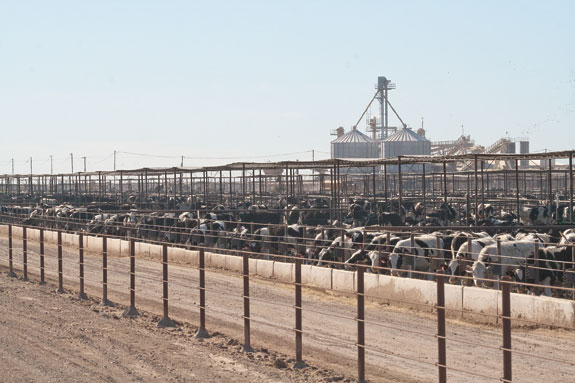
“It’s all economics and which are going to be more profitable to us in the long run,” Chapman says. “With corn prices as high as they are, we grow a lot of roughage. These crossbreds eat a lot of roughage and a lot less corn than the Holsteins, so it makes more sense.”
Lay of the land
Chapman says the farmland and its rich yield of high-quality alfalfa, sudangrass and bermudagrass was previously sold to other operations, but is now exclusively used for Brandt cattle.
Of the 5,000 acres in production, Mark Brandt says 3,000 acres are used for alfalfa production. Typically, they’ll get eight to nine cuts a year, with an average of 8 tons per acre and some fields getting as high as 10 tons per acre.
Sudangrass isn’t planted until March, Mark says, with cuts in May, July and August. But alfalfa cutting remains a year-round operation with only some seasonal slowdown.
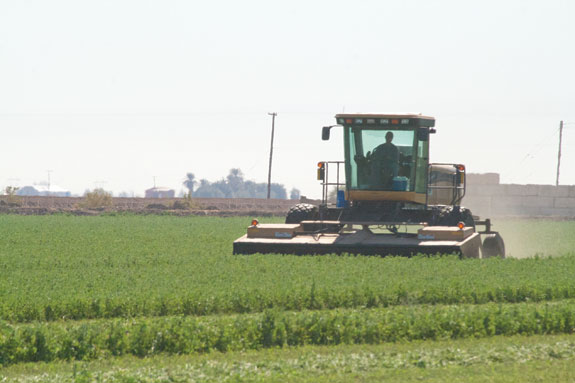
That production is crucial for the feedyard and its natural and traditional programs. Around 800 tons are fed daily and the mill will process about 2 tons per minute when in operation.
“Everything will get fed twice a day and they’ll be through in about 8½ to 9 hours in making that 750 to 800 tons of feed,” says Bill Brandt.
“We like to think it’s like playing a game of football, a very competitive business. As the corn price goes higher and higher, we’ve got to be more efficient on whatever we’re doing.”
Sustainability goes beyond just forage production. The Brandt operation composts its own manure year-round.
Pens are routinely cleaned and manure hauled to an adjacent lot. There it’s spread into windrows where the California sun heats it above 131 degrees for 60 to 90 days.
The state carefully regulates compost production with testing for e. coli, fecal coliform, salmonella and for traces of heavy metal.
Mark Brandt says all compost is used on the farm or sold to local producers. Last year the operation put out about 60,000 tons of compost, with 10 tons being applied to each acre of farmland.
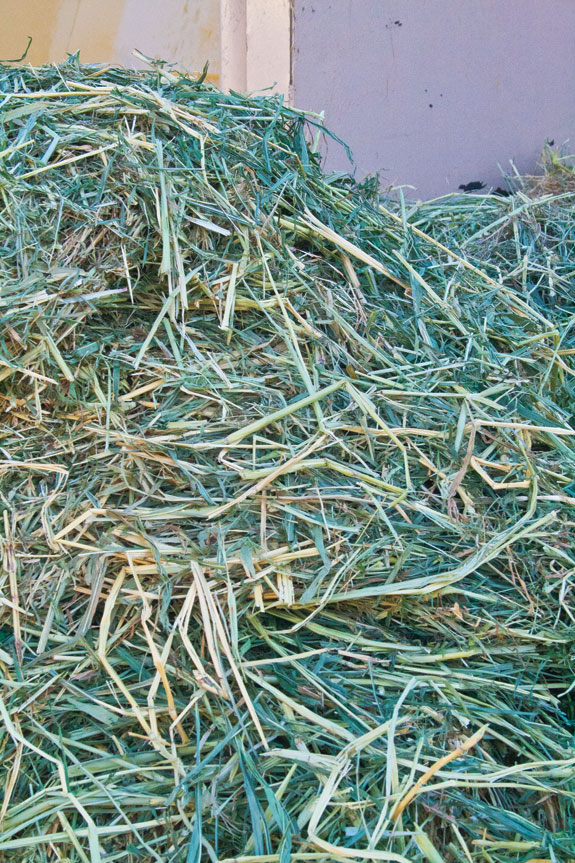
Brandt has embraced age-source verification on the natural program, as well as for the commodity beef sold to National Beef for export to Japan.
Chapman says about 95 percent of the calves that arrive have an EID tag and fit into an export program.
Edge in innovation
The way Brandt has modernized beef production has served equally well for the local economy thanks to some collaborative efforts with other feedlots.
California used to have a number of packing facilities, before labor issues and aging technology moved facilities to the Midwest. That change left feedlots in Southern California with one packer option.
“Without having competition, there was no future for the valley here,” Bill explains.
So Brandt and other feedlots in the California-Arizona region built Brawley Beef Co. – a modern packing facility that opened late in 2001.
That cooperative group sold the facility to National Beef (“We found out we were better at feeding cattle than processing beef,” Bill says.), but the venture still forged a strong bond for local feeders with a reliable packer.
The same bold approach worked in 2006 when Brawley and Superior Cattle Feeders joined to construct a siding track for freight shipments of corn.
The facility, located south of the Calipatria feedyard, is next to the Union Pacific main line and serves a number of feeders in the region with shipments of corn from the Midwest.
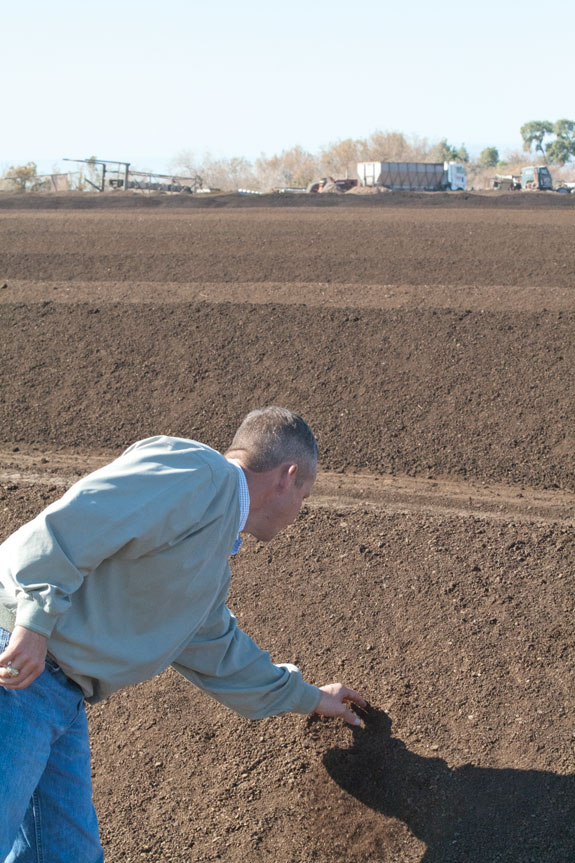
California’s evolution from an agricultural mecca to the home of Hollywood and Silicon Valley, has thrust ag into many challenges, particularly for livestock production.
Clean air and clean water concerns are at the forefront of state and federal regulations. But the company takes a proactive mindset on the key issues affecting its productivity.
The Brandts praise the work done with California Cattlemen’s Association and allied producers, by staying ahead of critics’ concerns and protecting ag interests.
“It’s a balancing act, and we try to get along with the people here,” Chapman says. “They know the amount of jobs we (in the ag community) supply.”
“Everyone’s either focused on cattle feeding or farming,” Mark Brandt says of the Brandt operation. “We’ve been able to marry them both pretty well.” ![]()
PHOTOS
PHOTO 1: From left, farm manager Mark Brandt, feedlot manager Scott Chapman and Brandt Co. president Bill Brandt.
PHOTO 2: Brandt Co. feedyard in Imperial Valley holds 95,000 head of cattle, most steers from California’s dairy industry.
PHOTO 3: In most years Brandt Farms can get eight or nine cuts from its 3,000 acres of alfalfa.
PHOTO 4: A growing segment of the cattle at Brandt is crossbred cattle that feeds heavily on the rich sudangrass grown on the local farm.
PHOTO 5: Scott Chapman shows the compost yard at Brandt Co. that produces 60,000 tons annually. Staff Photos







